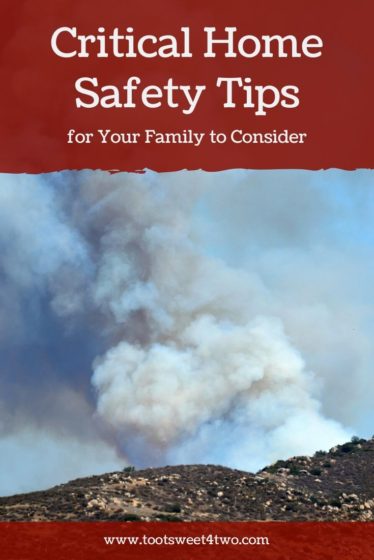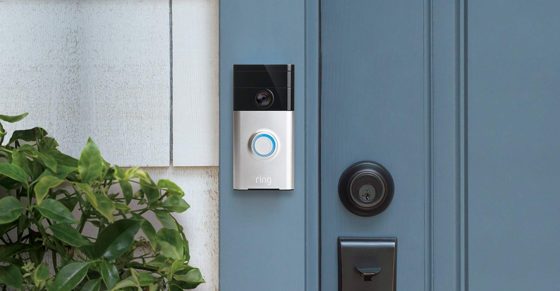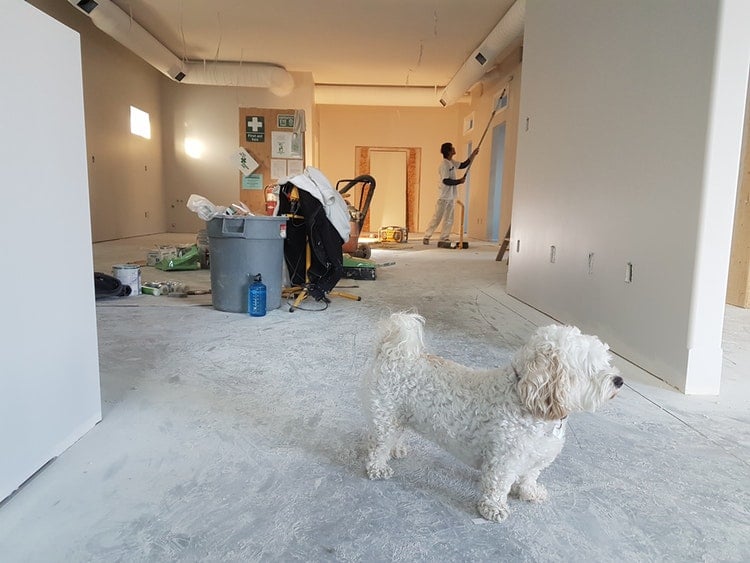Home is a place to relax and enjoy time with family – a place that symbolizes safety and security. Unfortunately, it is also the place where most accidents occur. According to the National Safety Council, in 2017, over 25 million preventable injuries requiring a medical consultation and 90,200 injury-related deaths occurred.
Minor scrapes and bruises are a part of normal everyday life. Still, inadequate home safety measures can result in more serious injuries. Young children and seniors who spend most of their time at home are more likely to suffer an injury, which is why it’s essential to adopt these home safety measures.
Disclosure: This post contains affiliate links for your convenience. Click here to read my full disclosure policy.
6 Crucial Home Safety Tips for Your Family
1. Stay vigilant in the kitchen
Burns are among the most common causes of accidental death in children and adults and account for approximately 3,500 deaths in the country per year. About 75% of all scalding burns in children are preventable and typically occur due to inattention and unsafe practices.
The kitchen is the most likely place in a home for burn accidents. Never leave your child unattended in the kitchen! If you do need to leave for even a short period, take your child with you. Children and toddlers often try to reach up and pull things down from the countertop, so make sure that you keep pans away from the edge and with the handle turned in.
Cleaning cloths, potholders, and other flammable materials should be stored away from the stove to prevent accidental fires. A kitchen fire can spread quickly, which is why it is crucial to keep a fire extinguisher in the kitchen in an area that’s easy to access.
2. Minimize the risk of falls
Children and seniors are most at risk for a fall at home. Bathrooms are the most commonplace for slip and fall accidents and can result in serious injuries. Non-slip mats and stickers are an excellent way to prevent slipping on slick surfaces. You can also install safety rails or balance assist bars to help family members get in and out of the shower safely.
Double-check the safety of your staircase by removing any tripping hazards and making sure handrails are securely fixed. Stairs should also have adequate lighting so that family members don’t lose their footing while using the stairs at night. Homes with toddlers or small children should have safety gates installed at the top and bottom of stairs to prevent falls.
It is estimated that nearly 15,000 children are injured each year due to falls from windows. Window falls are more common in urban areas and occur due to inadequate window safety measures. Screens are designed to stop insects from coming in and should not be used as a safety measure. Window guards with bars no more than four inches apart are necessary for all upper-level windows.
3. Secure your home
Roughly 2.5 million Americans are victims of burglary each year, and 66% of these crimes are home break-ins. There are several simple steps that you can take to ensure the safety and security of your home and your family. Make sure that all exterior doors have 1-inch deadbolt locks and check windows and doors before you go to bed or leave your home. Although practical, you should never hide a spare key near your front door as it’s probable that a thief will find it and easily gain entry to your home.
Devices such as burglar alarms and motion detection sensor lights drastically reduce the risk of a home burglary. Always check to see who is at the door before you open it, and if there’s a stranger, keep your phone handy just in case you need to call for help.
Investing in a front door camera or video doorbell can provide peace at mind, especially at night or when you are away from home. The Ring video doorbell, for example, has HD video, infrared night vision, allows you to hear and speak with visitors, and will send alerts when motion is detected.
4. Prevent electrical injuries and fires
There are at least 30,000 shock incidents in the United States each year, and approximately 20% of all electrical injuries happen to children, especially toddlers. Electricity is a necessary part of modern life, but we tend to take it for granted and often ignore necessary electrical safety measures at home.
Overloading an outlet with multiple adaptors can lead to overheating and electrical fires, which is why it is vital to understand how much power your appliances use. Extension cords are a temporary solution and should be replaced if the cable becomes frayed. Use childproof caps to block unused outlets as small children can be overly curious. Make sure that all your electrical products are Underwriter Laboratories (UL) approved as they have high product testing and safety standards. Your home electrical system should be installed and repaired only by a certified professional.
5. Take precautions when renovating
More and more homeowners are becoming inspired to tackle DIY projects, as made evident by the sheer number of home renovation shows on television today. Whether you are hiring a professional contractor or doing the work yourself, certain precautions should be taken. This is especially true if your home was built before 1978 – which is when lead-containing paint was banned.
During renovation, the lead in the old layers of paint becomes air-borne and can pose a health risk to you and your family. Similarly, asbestos was widely used in drywall manufacturing across the United States and was only banned in the late 70s. Demolishing any of these old walls can send asbestos particles into the air, which poses a significant health concern. It is best to hire a certified lead-based paint inspector or asbestos assessor before conducting renovations in an old house.
6. Ask Yourself These Important Questions
- Have I tested the smoke alarm and replaced the batteries? Have I installed them in the correct locations?
- Is the carbon monoxide detector functioning correctly? Do I need to add additional CO detectors to my home?
- Is everything childproofed that needs to be?
- Have I cleaned the lint from the dryer recently?
- Does my fire extinguisher need to be inspected, recharged, or replaced? Do I have an adequate number in my home?
These are the types of questions you should be asking when you’re considering the overall safety of your home. With your fire extinguisher and smoke alarms, sometimes it is best to consult a professional!
The Importance of an Emergency Preparedness Plan for your Family
Hurricanes, floods, and wildfires have become more common, which is why you must prepare an emergency plan for your family.

It is natural to feel scared during an emergency, but being prepared and walking through various scenarios will enable you to make smart decisions under pressure. An emergency preparedness plan should include a disaster supply kit along with medical supplies and other emergency essentials. Develop easy-to-remember plans and run practice drills to make sure that everyone knows what they are supposed to do.
You should have contingency plans and meeting locations in case communication lines are down. For instance, a neighbor’s home in the event of a house fire or a nearby school in case of a large scale emergency. Allocate tasks to every family member as this will help to prevent fear and panic and help you stay on top of the situation.
Toddlers are energetic and curious about the world around them which is why it’s not easy to keep up with them. According to the experts at What To Expect, you should crawl around on all fours to give you a toddler’s eye view. This will help you detect any potential dangers that you might have overlooked from your usual field of view. This will help while childproofing your home. Also, it is advisable to upgrade and reassess your childproof measures as your toddler grows up to prevent accidents and injuries.
 Author Bio
Author Bio
Anita Fernandes has been writing extensively on health and wellness for over a decade. She has expertise in nutrition, fitness, public health, and weight loss and has contributed content to a variety of leading digital health publishers. Anita has a unique perspective on healthy living and lifestyle, as she has battled and overcome eating disorders and obesity. She shares her experiences to help others overcome the physical and mental health problems that can sometimes seem insurmountable.
Are You Ready? Here are a few Posts to Help Prepare:
Any Way the Wind Blows
Vehicle Emergency Kit
Emergency Contact Sheet
Emergency Planning Checklist
Family Emergency Kit



Leave a Reply